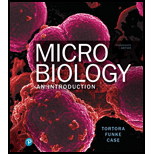
Three days before a nurse developed meningococcemia, she assisted with intubation of a patient with a Neisseria meningitidis infection. Of the 24 medical personnel involved, only this nurse became ill. The nurse recalled that she was exposed to nasopharyngeal secretions and did not receive antibiotic prophylaxis. What two mistakes did the nurse make? How is meningitis transmitted?
Introduction:
Meningococcemia is a contagious bacterial infection it is directly affect the bloodstream which is caused by the bacterium Neisseria meningitidis. It is spread through respiratory secretions. The first signs and symptom include fever, nausea, myalgia, headache, arthralgia, chills, diarrhea, stiff neck, and malaise. The rashes will be appear often.
Explanation
The staff nurse who care for such affected patients with conformed Neisseria meningitidis infection should use Personal protective equipment (PPE) and also follow the proper hand washing technique. Secondly, Antimicrobial chemoprophylaxis is essential to prevent meningococcal infections. But this nurse forgets to use PPE and receive prophylaxis.
the meningitis is transmitted through the droplet infection and the causative organism are Group B Streptococcus (GBS), Streptococcus pneumoniae (also called pneumococcus), Heamophillus influenza, Neisseria meningitides (also called meningococcus), and Listeria monocytogenes.
Application:
While caring the patients diagnosed with meningococcal diseases and who hospitalized must placed in respiratory precautions and start with effective antimicrobial therapy can prevent the cross-infection in hospital workers. But no need for Antimicrobial chemoprophylaxis for the personnel who have only casual or indirect contact with a patient with meningococcal disease. Antimicrobial chemoprophylaxis should be administered even the passenger who had direct contact with respiratory secretions for anyone seated directly next to an affected person on a prolonged time more than 8 hours.
Conclusion:
To decrease the cross-infection in the clinical setting and hospital staff who caring for patients with known or suspected meningococcal infections should take standard precautions and antimicrobial chemoprophylaxis.
Want to see the full answer?
Check out a sample textbook solution
Chapter 14 Solutions
Microbiology: An Introduction (13th Edition)
Additional Science Textbook Solutions
Biology: Life on Earth with Physiology (11th Edition)
Laboratory Manual For Human Anatomy & Physiology
The Cosmic Perspective (8th Edition)
Microbiology Fundamentals: A Clinical Approach
Human Physiology: An Integrated Approach (8th Edition)
- How is a protein destined for the Endoplasmic Reticulum (ER), imported into the ER? Be concise.arrow_forwardFind out about the organisations and the movements aimed at the conservation of our natural resources. Eg Chipko movement and Greenpeace. Make a project report on such an organisation.arrow_forwardWhat are biofertilizers and mention the significancearrow_forward
- PCBs and River Otters: Otters in Washington State’s Green-Duwamish River have high levels of polychlorinated biphenyls (PCBs) in their livers. PCBs can bind to the estrogen receptors in animals and disrupt the endocrine system of these otters. The PCBs seem to increase the estrogen to androgen ratio, skewing the ratio toward too much estrogen. How would increased estrogen affect the river otter population? Based on your reading of the materials in this unit, what factors can affect fertility in humans? Explain how each of the factors affecting human fertility that you described can disrupt the human endocrine system to affect reproduction.arrow_forwardOther than oil and alcohol, are there other liquids you could compare to water (that are liquid at room temperature)? How is water unique compared to these other liquids? What follow-up experiment would you like to do, and how would you relate it to your life?arrow_forwardSelection of Traits What adaptations do scavengers have for locating and feeding on prey? What adaptations do predators have for capturing and consuming prey?arrow_forward
- Competition Between Species What natural processes limit populations from growing too large? What are some resources organisms can compete over in their natural habitat?arrow_forwardSpecies Interactions Explain how predators, prey and scavengers interact. Explain whether predators and scavengers are necessary or beneficial for an ecosystem.arrow_forwardmagine that you are conducting research on fruit type and seed dispersal. You submitted a paper to a peer-reviewed journal that addresses the factors that impact fruit type and seed dispersal mechanisms in plants of Central America. The editor of the journal communicates that your paper may be published if you make ‘minor revisions’ to the document. Describe two characteristics that you would expect in seeds that are dispersed by the wind. Contrast this with what you would expect for seeds that are gathered, buried or eaten by animals, and explain why they are different. (Editor’s note: Providing this information in your discussion will help readers to consider the significance of the research).arrow_forward
- Health Safety And Nutrition F/Young ChildHealth & NutritionISBN:9781305144767Author:MAROTZPublisher:CengageEssentials of Pharmacology for Health ProfessionsNursingISBN:9781305441620Author:WOODROWPublisher:Cengage
 Microbiology for Surgical Technologists (MindTap ...BiologyISBN:9781111306663Author:Margaret Rodriguez, Paul PricePublisher:Cengage Learning
Microbiology for Surgical Technologists (MindTap ...BiologyISBN:9781111306663Author:Margaret Rodriguez, Paul PricePublisher:Cengage Learning Comprehensive Medical Assisting: Administrative a...NursingISBN:9781305964792Author:Wilburta Q. Lindh, Carol D. Tamparo, Barbara M. Dahl, Julie Morris, Cindy CorreaPublisher:Cengage Learning
Comprehensive Medical Assisting: Administrative a...NursingISBN:9781305964792Author:Wilburta Q. Lindh, Carol D. Tamparo, Barbara M. Dahl, Julie Morris, Cindy CorreaPublisher:Cengage Learning





